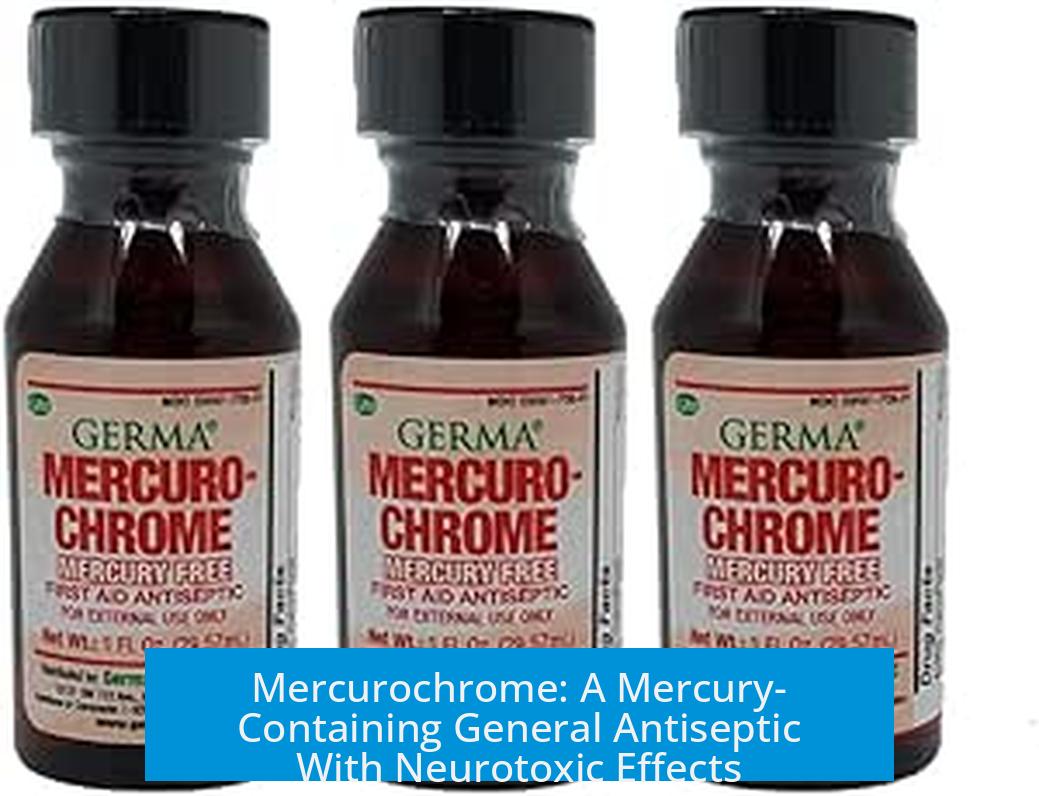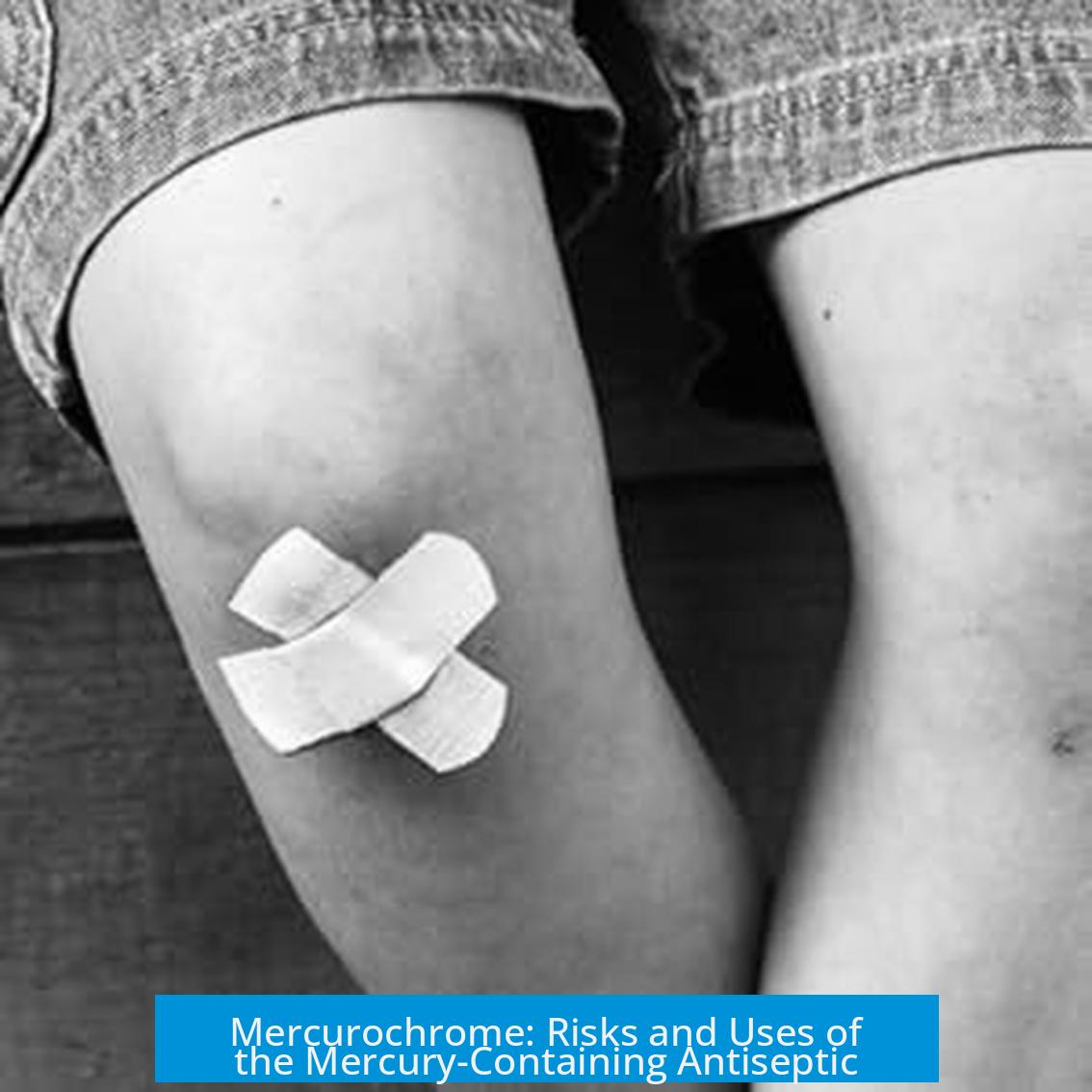Mercurochrome: A Mercury-Containing General Antiseptic With Neurotoxic Effects

Mercurochrome is a topical antiseptic that contains mercury compounds and has a history of widespread use for cuts and scrapes, yet concerns about its neurotoxicity remain disputed and unproven in typical applications.
General Description and Use
Mercurochrome, also known as merbromin, is a red-orange antiseptic liquid applied to minor wounds to prevent infection. It was a common household item for decades, popular across the United States, Australia, Italy, and elsewhere.
- Used by generations of families on scrapes, cuts, and bruises.
- Known colloquially as “monkey blood” or “fire engine stuff” due to its bright color and sting.
- Distinctive for its blunt applicator and strong burning sensation during use.
- Often favored over other mercury-containing antiseptics, like Merthiolate, which caused more discomfort.
The product’s vibrant hue led to childhood memories of pretending it was fake blood. Its usage declined in many regions by the early 1990s but persists in some countries and markets.
Chemical Composition and Mercury Considerations
Mercurochrome contains mercury in the form of merbromin, a complex organomercurial compound. Despite its mercury content, scientists note that it is not readily absorbed by the body (non-bioavailable) when used topically.
- Mercury compounds in Mercurochrome are structurally bound, reducing systemic absorption.
- Similar to thiomersal, a mercury-containing vaccine preservative widely used with minimal toxicity.
- The presence of mercury alone does not confirm toxicity without considering bioavailability.
- Historical use of cinnabar (mercury sulfide) and mercury in other applications hints at potential risks but differs chemically and contextually.
Public concerns about mercury toxicity stem from well-known dangers of mercury exposure in industrial or high-dose contexts, but topical application of mercurochrome differs significantly.
Neurotoxic Effects: Controversy and Evidence
The claim that mercurochrome causes neurotoxic effects lacks conclusive scientific evidence. Scientific consensus has not established neurotoxicity from the amounts absorbed through typical topical use.
- No robust studies confirm brain or nerve damage from mercurochrome applied to skin wounds.
- Historical mercury poisoning cases, such as “mad hatter disease,” involved inhalation or ingestion of inorganic mercury vapor, unlike topical antiseptics.
- Safe usage over decades in children and adults suggests minimal risk if not ingested.
- Concerns about neurotoxicity are often speculative or based on general caution around mercury.
Experts emphasize avoiding ingestion and proper use but note the neurotoxicity argument in topical use is largely unsupported.
Cultural and Historical References
Mercurochrome has left a significant cultural imprint. It appears in popular culture, such as the musical Rent, where a character references its healing role. Many recall its presence in home medicine cabinets for decades.
- Users remember the sharp sting and distinctive coloring it caused on skin.
- Bottles of Mercurochrome are still found in older households, often hidden or kept for nostalgia or precaution.
- Critiques of the product emerged by the late 1980s and 1990s, sparking debate on its safety.
- Personal anecdotes reflect mixed feelings—both fond memories and dislike due to discomfort on application.
Availability and Modern Usage
While no longer mainstream in many countries, Mercurochrome remains available for purchase in select markets, including Australia and Italy. Replacement antiseptics, like tincture of iodine, have largely supplanted it in clinical and household settings.
- Still sold in pharmacies at affordable prices.
- Used occasionally for minor wounds despite alternatives.
- Modern antiseptics are preferred for less sting and absence of mercury.
- Its continued presence links medical traditions with evolving safety standards.
Related Chemicals and Treatments
Mercurochrome belongs to a broader class of antiseptics used historically, some of which also contained mercury. Merthiolate (thimerosal) is the closest competitor, known for its more painful application.
- Other topical agents include gentian violet and tincture of iodine.
- Sodium hypochlorite is a different class of chemical used for antisepsis but not related chemically to mercurochrome.
The shift away from mercury-based antiseptics reflects increasing awareness of chemical safety and the development of less reactive compounds.
Key Takeaways
- Mercurochrome is a topical antiseptic containing mercury, historically common for minor wound care.
- Its mercury component is not bioavailable, reducing systemic toxicity via topical use.
- Scientific evidence for neurotoxicity from typical topical application is lacking and controversial.
- It causes a burning sensation and dyes skin red-orange upon application.
- The product remains available in some countries, although modern antiseptics are more commonly used today.





Leave a Comment